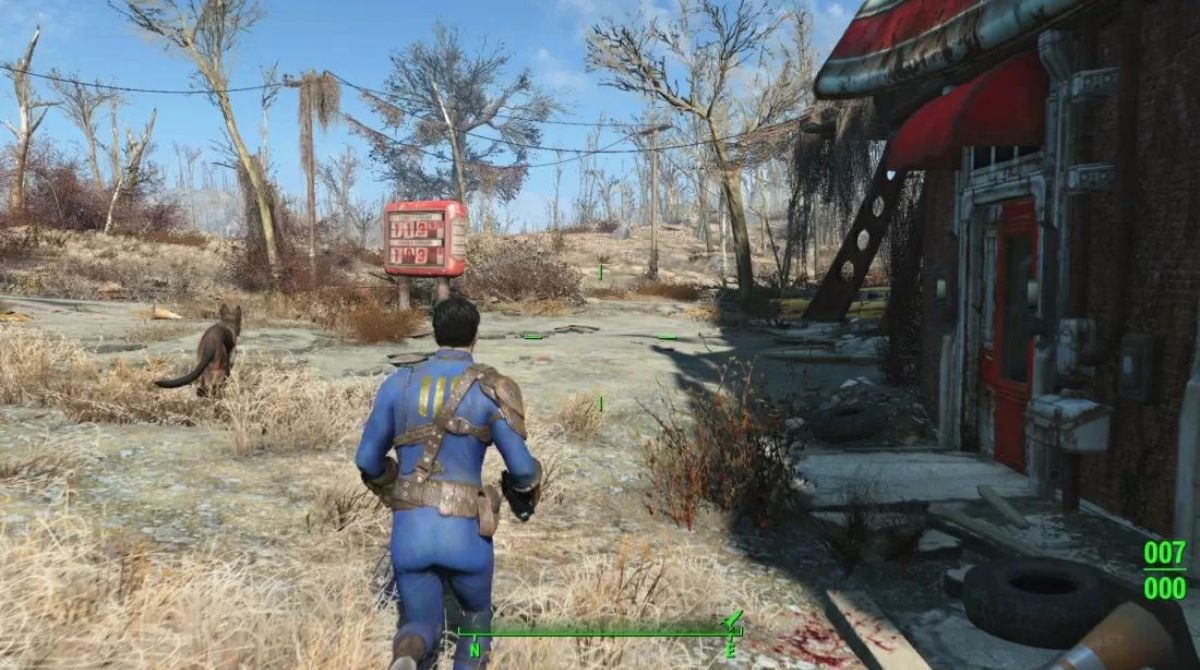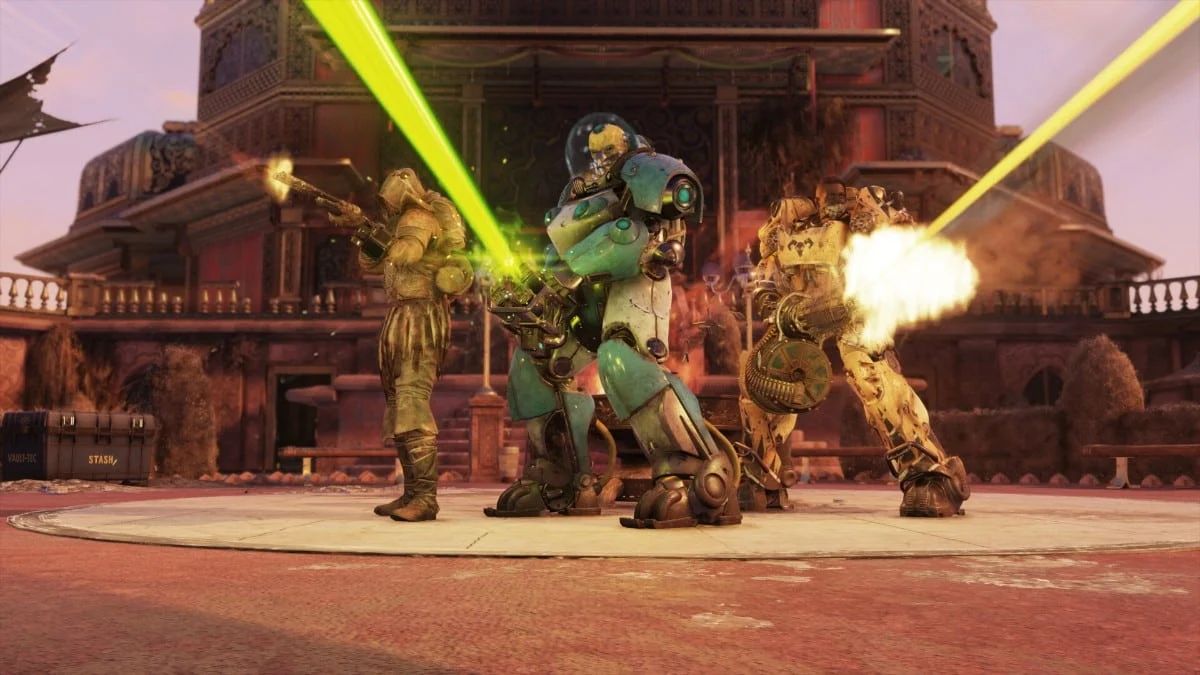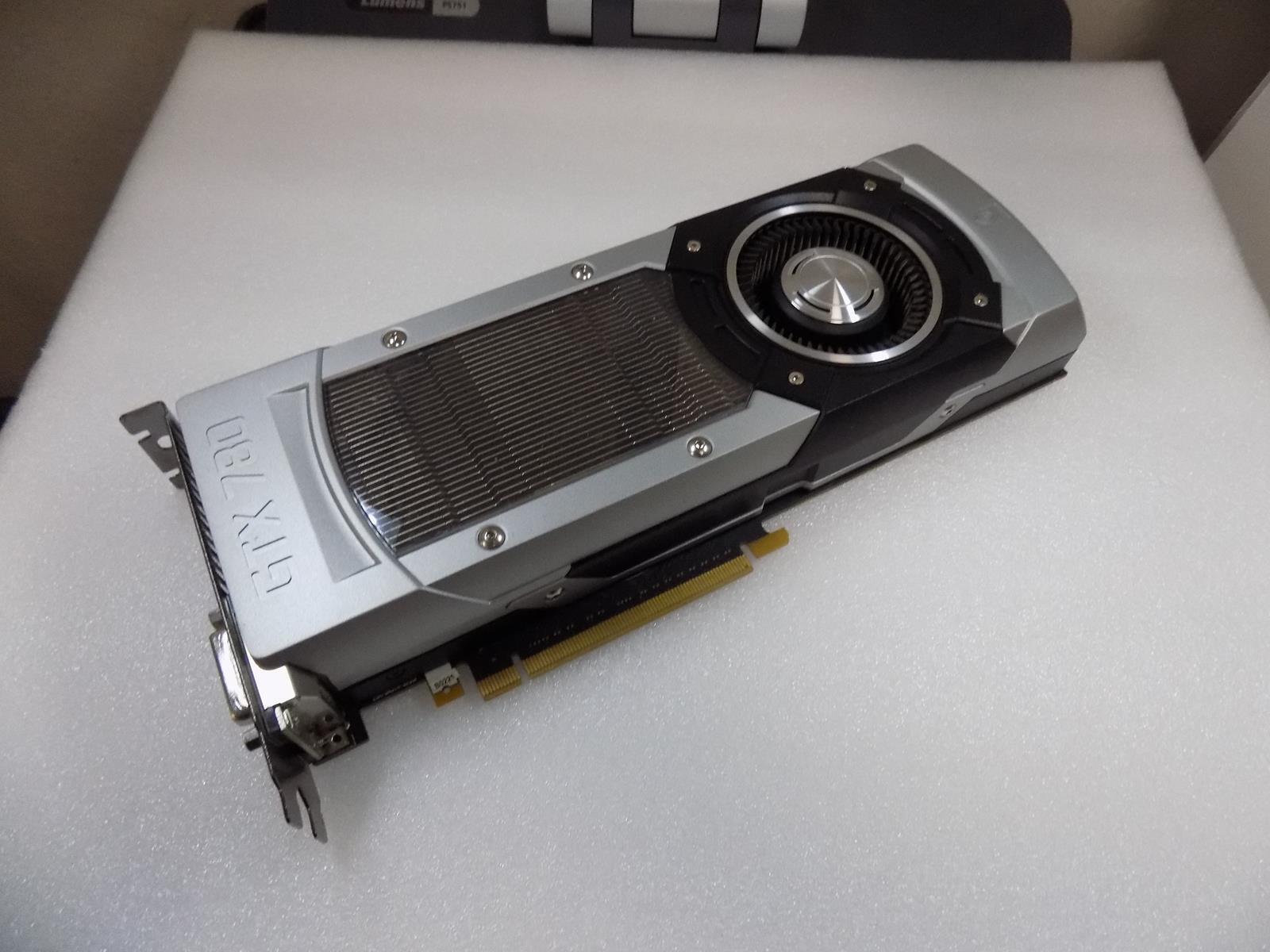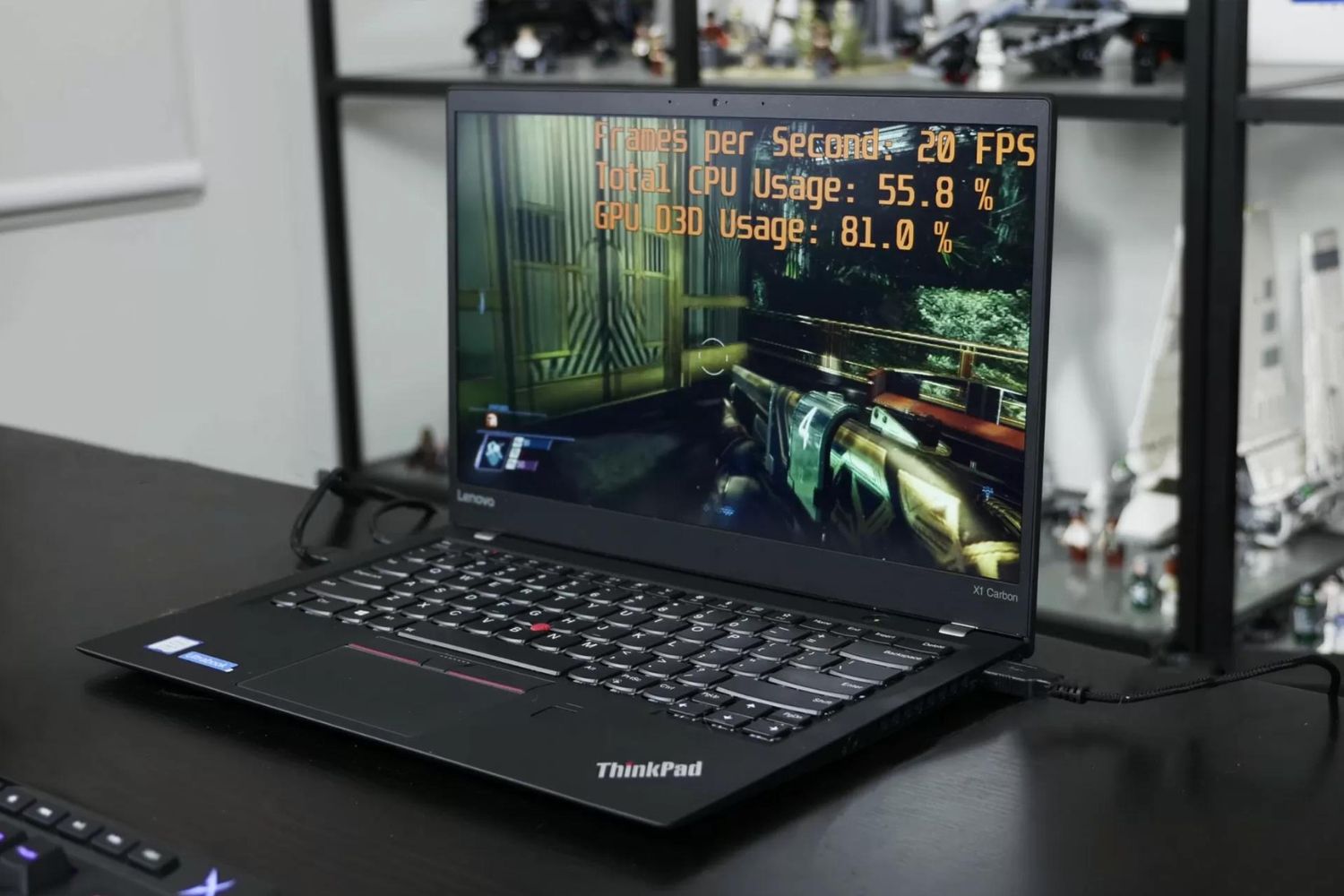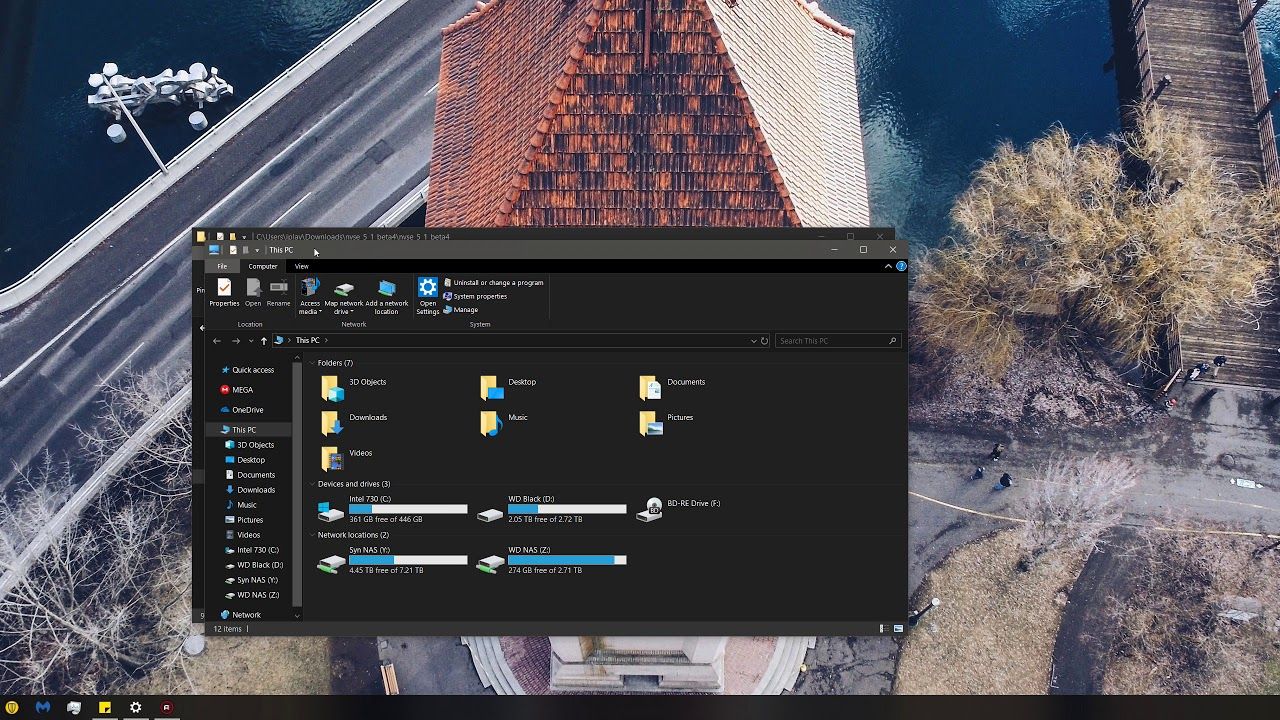Introduction
Welcome to this guide on how to allocate more RAM to Fallout 3. If you’re an avid gamer, you know how important it is to optimize your system’s performance to fully enjoy your gaming experience. Fallout 3, known for its immersive post-apocalyptic world and captivating storyline, is no exception.
RAM, or Random Access Memory, plays a crucial role in the performance of any computer game, including Fallout 3. It is responsible for temporarily storing and accessing data that the game requires to run smoothly. By allocating more RAM to Fallout 3, you can ensure smoother gameplay, shorter loading times, and less lag.
In this guide, we will explore various methods to increase the amount of RAM dedicated to Fallout 3. Whether you’re using a gaming PC or a laptop, there are several techniques you can employ to optimize your gaming experience.
Before we dive into the details, it’s important to note that the effectiveness of these methods may vary depending on your system’s specifications and overall hardware capabilities. It’s always a good idea to check your system requirements and available RAM before implementing any changes.
In the following sections, we will explore different techniques for allocating more RAM to Fallout 3. From adjusting virtual memory settings on your computer to modifying Fallout 3’s configuration files and using optimization mods, we will cover a range of options to help you enhance your gameplay. We’ll also discuss the importance of updating your graphics drivers, closing background programs, overclocking your RAM, and even upgrading your RAM if necessary.
So, if you’re ready to take your Fallout 3 experience to the next level, let’s dive into the details and explore the various strategies you can employ to allocate more RAM to this immersive game.
Understanding the Importance of RAM Allocation in Fallout 3
RAM allocation is a critical aspect of optimizing the performance of Fallout 3. When playing this open-world role-playing game, you’ll encounter vast environments filled with detailed textures, complex character models, and dynamic interactions. All of these elements require a significant amount of RAM to ensure smooth gameplay and prevent crashes or lag.
Fallout 3, like many modern games, relies on loading and rendering large amounts of data in real-time. This includes everything from the game world itself to the intricate AI behavior of non-playable characters and the physics interactions of objects. Insufficient RAM allocation can result in performance issues, such as long loading times, choppy frame rates, and even game freezes.
By allocating more RAM to Fallout 3, you provide the game with additional memory for storing and accessing the necessary data. With more RAM available, the game can load assets faster, handle complex calculations more efficiently, and deliver a smoother and more immersive gaming experience.
It’s important to note that Fallout 3’s recommended system requirements already include a minimum RAM size for optimal performance. However, if your system has limited RAM or you want to push the game’s performance even further, allocating more RAM can be beneficial.
With increased RAM allocation, you may experience reduced stuttering and improved texture loading. This can result in more seamless transitions between different areas of the game world, thereby enhancing the overall gameplay experience. Additionally, allocating more RAM can also minimize the occurrence of crashes and improve compatibility with mods and custom content.
While allocating more RAM can certainly enhance Fallout 3’s performance, it’s crucial to find the right balance. Allocating too much RAM can lead to inefficient resource usage and potentially cause instability in your system. Therefore, it’s important to consider the capabilities of your computer and the available RAM when determining the optimal allocation. Experimentation may be necessary to find the sweet spot where performance improvement is maximized without overwhelming your system.
Now that we understand the significance of RAM allocation in Fallout 3, let’s move on to the practical steps you can take to allocate more RAM to this critically acclaimed game.
Checking System Requirements and Available RAM
Before diving into the process of allocating more RAM to Fallout 3, it’s important to assess your system’s specifications and available resources. This will help you determine if your system meets the minimum requirements and whether additional RAM allocation is necessary.
First, check the official system requirements for Fallout 3. These requirements outline the minimum and recommended specifications for running the game. Pay particular attention to the recommended RAM size, as this will give you a baseline understanding of the amount of memory needed for optimal performance.
Once you know the recommended RAM size, it’s time to examine how much RAM is currently installed on your computer. To do this on a Windows PC, open the “Task Manager” by pressing “Ctrl + Shift + Esc” on your keyboard or by right-clicking on the taskbar and selecting “Task Manager”. Under the “Performance” tab, you can see the “Physical Memory” section, which displays the amount of RAM installed on your system.
Compare the recommended RAM size from the game’s system requirements with the available RAM on your computer. If your available RAM is equal to or greater than the recommended size, you may not need to allocate additional RAM. However, if your available RAM is lower than the recommended size or you encounter performance issues while playing Fallout 3, allocating more RAM can be beneficial.
In some cases, you may have additional RAM slots on your motherboard that are currently unoccupied. If this is the case, you can simply install more RAM modules to increase the total available memory. However, if all RAM slots are already occupied, you may need to replace your existing RAM modules with higher-capacity ones.
Keep in mind that the maximum amount of RAM your system can support is determined by factors such as the operating system and motherboard specifications. Consulting your system’s documentation or the manufacturer’s website will provide you with the necessary information regarding maximum RAM support.
Now that you’ve assessed your system’s requirements and available RAM, you can proceed with the steps to allocate more memory to Fallout 3. In the next sections, we’ll explore various techniques to optimize your RAM allocation and enhance the performance of the game.
Adjusting Virtual Memory Settings on Your Computer
In addition to the physical RAM installed on your computer, you can also utilize virtual memory to allocate more memory to Fallout 3. Virtual memory is a portion of your hard drive that is used to supplement RAM when it becomes full. Adjusting the virtual memory settings can help improve game performance by providing additional memory for Fallout 3 to utilize.
To adjust the virtual memory settings on a Windows PC, follow these steps:
- Open the “Control Panel” and select “System and Security”.
- Under the “System” category, click on “Advanced system settings”.
- In the “System Properties” window, click on the “Advanced” tab and select the “Settings” button under the “Performance” section.
- In the “Performance Options” window, navigate to the “Advanced” tab and click on the “Change” button under the “Virtual memory” section.
- Uncheck the “Automatically manage paging file size for all drives” box.
- Select the drive where Fallout 3 is installed (usually the C: drive) and choose the “Custom size” option.
- Enter a higher value for the initial and maximum size of the paging file. The recommended size is typically 1.5 times your total physical RAM. For example, if you have 8 GB of RAM, you can set the initial and maximum size to 12 GB.
- Click on the “Set” button and then “OK” to apply the changes.
- Restart your computer for the changes to take effect.
By adjusting the virtual memory settings and increasing the size of the paging file, you are essentially providing additional memory for Fallout 3 to utilize when the physical RAM is insufficient. This can help reduce the likelihood of game crashes, improve loading times, and minimize performance issues caused by low memory.
Keep in mind that adjusting virtual memory settings is just one method of optimizing RAM allocation for Fallout 3. In the following sections, we’ll explore more techniques that can further enhance the game’s performance. Whether you’re a casual player or a dedicated enthusiast, these optimization methods can take your Fallout 3 experience to new heights of smoothness and immersion.
Modifying Fallout 3’s Configuration Files
An effective way to allocate more RAM to Fallout 3 is by modifying its configuration files. These files contain various settings and options that can be tweaked to optimize the game’s performance and allocate more memory.
To modify Fallout 3’s configuration files, follow these steps:
- Locate the Fallout 3 configuration files on your computer. The main configuration file is named “Fallout.ini” and can be found in the game’s installation directory.
- Make a backup copy of the “Fallout.ini” file before making any changes. This will ensure that you can revert back to the original settings if needed.
- Open the “Fallout.ini” file with a text editor, such as Notepad.
- Within the file, search for the line that begins with “iPreloadSizeLimit=”. This line determines the maximum amount of memory that Fallout 3 can utilize.
- Increase the value next to “iPreloadSizeLimit=” to allocate more memory to the game. The value is measured in kilobytes (KB). For example, you can set it to 512000 for 512MB of memory allocation.
- Save the changes and exit the text editor.
By modifying the “iPreloadSizeLimit” value, you are increasing the maximum memory usage for Fallout 3. This can help prevent crashes and improve overall performance, especially in scenarios where the game requires more memory to load and render large game environments or complex textures.
It’s worth noting that modifying configuration files requires some technical knowledge and understanding of the game’s settings. Therefore, it’s crucial to proceed with caution and make the necessary backups before making any changes.
Additionally, keep in mind that Fallout 3 has several other configuration files, such as “FalloutPrefs.ini”, which contain additional settings that can be tweaked to optimize the game’s performance. Exploring these files and adjusting the relevant settings can further enhance memory allocation and overall gameplay experience.
Now that you’ve learned how to modify Fallout 3’s configuration files to allocate more RAM, let’s explore more techniques in the following sections. These methods, when combined, can significantly enhance the performance and enjoyment of your Fallout 3 gaming sessions.
Using Fallout Stutter Remover Mod to Optimize RAM Usage
Fallout 3, like many other games, can suffer from stuttering issues, where the gameplay becomes choppy and unresponsive. Stuttering can be caused by various factors, including inefficient RAM usage. One effective solution to optimize RAM usage and reduce stuttering in Fallout 3 is to install the Fallout Stutter Remover mod.
The Fallout Stutter Remover mod, developed by a dedicated modding community, addresses performance issues related to RAM usage in Fallout 3. This mod implements various optimizations to improve the game’s stability, reduce memory-related stutters, and overall enhance the gameplay experience.
To install the Fallout Stutter Remover mod, follow these steps:
- Search for and download the Fallout Stutter Remover mod from a reputable modding website. Make sure to choose the version compatible with your game’s release.
- Extract the downloaded files to a temporary location.
- Locate the “Fallout3.exe” file in the Fallout 3 installation directory.
- Create a backup copy of the “Fallout3.exe” file before proceeding.
- Replace the original “Fallout3.exe” file with the one included in the Fallout Stutter Remover mod.
- Launch Fallout 3 and verify that the mod is functioning correctly by checking the mod’s documentation or configuration options.
Once the Fallout Stutter Remover mod is installed and active, it will monitor and optimize the game’s RAM usage, helping to minimize stuttering and improve overall performance. The mod achieves this by implementing memory management techniques, such as reducing RAM fragmentation and optimizing memory allocation.
It’s important to note that modding can sometimes carry risks, and it’s crucial to download mods from trusted sources to ensure they are reliable and compatible with your game version. Additionally, keep in mind that modding can affect the stability of your game, so it’s recommended to make regular backups and test the modded game before committing to a full playthrough.
By utilizing the Fallout Stutter Remover mod, you can effectively optimize the RAM usage for Fallout 3, resulting in a smoother and more enjoyable gaming experience. Now that you’ve learned about this mod, let’s explore more techniques to further enhance RAM allocation in the following sections.
Updating Graphics Drivers and Closing Background Programs
In addition to allocating more RAM, updating graphics drivers and closing unnecessary background programs can significantly improve the performance of Fallout 3. Outdated graphics drivers and resource-intensive background programs can consume valuable system resources, including RAM, leading to reduced performance, including lag and low FPS (frames per second).
Updating graphics drivers ensures that your graphics card is running on the latest software, which can provide better compatibility and optimizations for Fallout 3. To update your graphics drivers, follow these steps:
- Identify the manufacturer and model of your graphics card. This information can be found in the Device Manager or by using a system information tool.
- Visit the manufacturer’s website (such as NVIDIA or AMD) and navigate to the drivers section.
- Search for the latest driver for your specific graphics card model and download it.
- Once downloaded, run the driver installer and follow the on-screen instructions to update your graphics drivers.
- After the installation is complete, restart your computer to apply the changes.
Updating graphics drivers ensures that your system can take full advantage of your graphics card’s capabilities, resulting in improved graphics quality and smoother gameplay.
In addition to updating graphics drivers, closing unnecessary background programs can free up system resources, including RAM, for Fallout 3 to utilize. Some programs, such as web browsers, chat clients, and antivirus software, can consume significant amounts of memory, leading to performance issues in games.
To close background programs on a Windows PC, follow these steps:
- Right-click on the taskbar and select “Task Manager” from the context menu.
- In the “Processes” or “Details” tab, identify the programs that are consuming high amounts of memory.
- Right-click on the program(s) and select “End Task” or “End Process” to close them.
By closing resource-intensive background programs, you can free up more RAM for Fallout 3, allowing the game to run more smoothly and without unnecessary performance bottlenecks.
Updating graphics drivers and closing background programs are simple yet effective techniques to optimize RAM allocation for Fallout 3. By ensuring that your system is running on the latest graphics drivers and minimizing unnecessary resource usage, you can enhance the overall performance and gaming experience of Fallout 3.
Now that you’re familiar with these techniques, let’s explore additional methods to further optimize RAM allocation in Fallout 3 in the following sections.
Overclocking Your RAM for Better Performance
Overclocking your RAM can be a powerful way to improve the performance of Fallout 3 by increasing the speed at which data is transferred between the RAM and the rest of your system. Overclocking involves adjusting your RAM’s frequency and timings beyond its stock settings in order to achieve higher memory speeds.
Overclocking your RAM should be done with caution, as it can potentially lead to instability if not done properly. It’s important to note that not all RAM modules are designed to be overclocked, and doing so may void the warranty. Additionally, overclocking may require adjusting voltage settings, which can increase the heat generated by your RAM. Make sure to monitor your system’s temperatures and consider proper cooling solutions if necessary.
Here are some general steps to overclock your RAM:
- Access your system’s BIOS by restarting your computer and pressing the appropriate key (e.g., Del, F2, Esc) during startup.
- Locate the RAM settings in the BIOS menu. The location and appearance of these settings may vary depending on your motherboard manufacturer and BIOS version.
- Adjust the RAM frequency and timings. Start by increasing the frequency in small increments (e.g., 200MHz) and test stability. If the system becomes unstable, revert to the previous frequency. If the system remains stable, continue increasing the frequency until desired speeds are achieved.
- Test stability with a benchmarking tool or stress test utility designed for RAM. This will help ensure that your system can handle the overclocked settings without crashing or producing errors.
- Monitor system temperatures and voltages to ensure they are within safe limits. If necessary, consider additional cooling solutions to prevent overheating.
Overclocking your RAM can provide noticeable improvements in Fallout 3’s performance, including faster loading times and smoother gameplay. However, it’s essential to understand the risks involved and proceed with caution. If you’re not comfortable overclocking your RAM, it’s recommended to seek assistance from experienced individuals or consult with a professional.
Keep in mind that Fallout 3’s performance is influenced by multiple factors, and overclocking your RAM alone may not guarantee significant improvements. It’s recommended to combine RAM overclocking with other optimization techniques discussed in this guide to achieve the best results.
Now that you’re familiar with overclocking your RAM, let’s proceed to explore the final method to optimize RAM allocation in the next section.
Upgrading RAM to Increase Performance in Fallout 3
If you’re still experiencing performance issues in Fallout 3 even after optimizing RAM allocation through various methods, upgrading your RAM may provide a significant boost in performance. Increasing the amount of RAM in your system allows for more data to be stored and accessed simultaneously, resulting in smoother gameplay and reduced loading times.
Before upgrading your RAM, it’s important to identify the type and maximum capacity of RAM supported by your motherboard. You can refer to your computer’s documentation or check the manufacturer’s website for this information.
To upgrade your RAM, follow these steps:
- Power off and unplug your computer.
- Open the computer case to access the RAM slots.
- Remove the existing RAM modules by pressing the retaining tabs and gently pulling the modules out.
- Align the notch on the new RAM module with the slot and firmly press it into place until the retaining tabs lock it in.
- Repeat the process if you’re installing multiple RAM modules.
- Close the computer case and reconnect any cables you disconnected.
- Power on your computer and ensure that the new RAM is detected by checking the BIOS or using system information tools.
By upgrading your RAM, you can significantly increase the amount of memory available for Fallout 3 and other resource-intensive applications to utilize. This can lead to smoother gameplay, reduced stuttering, and improved overall performance.
When selecting RAM modules for upgrading, consider factors such as speed (measured in MHz), capacity (measured in GB), and the number of modules your motherboard can support. Opt for higher-speed RAM and higher capacities if your motherboard supports them for better performance.
It’s important to note that upgrading your RAM may require some technical know-how, and if you’re not comfortable performing the upgrade yourself, it’s recommended to seek assistance from a professional.
By upgrading your RAM, you ensure that your system has sufficient memory to handle Fallout 3’s demands, allowing you to immerse yourself fully in the post-apocalyptic wasteland.
Now that we’ve explored the various methods to optimize RAM allocation in Fallout 3, it’s time to put these techniques into action and embark on an enhanced gaming experience. Whether you choose to adjust virtual memory settings, modify configuration files, install optimization mods, update graphics drivers, close background programs, overclock your RAM, or upgrade your RAM, each method plays a significant role in optimizing your system’s performance. Implementing a combination of these techniques ensures that you’re getting the most out of your gaming experience in Fallout 3.
Conclusion
Allocating more RAM to Fallout 3 is a crucial step in optimizing the game’s performance and enhancing your overall gaming experience. Throughout this guide, we explored various techniques to achieve this, ensuring smoother gameplay, reduced loading times, and minimized performance issues. Let’s recap the key points discussed:
We began by understanding the importance of RAM allocation in Fallout 3. We recognized that RAM plays a vital role in storing and accessing data required for seamless gameplay, and insufficient allocation can result in lag, long loading times, and game crashes.
Next, we discussed how to check your system requirements and available RAM. It’s essential to compare your available RAM with the recommended size to determine if additional allocation is necessary. We also discussed potential solutions such as upgrading your RAM if it falls short of the requirements.
We then explored methods to allocate more RAM, such as adjusting virtual memory settings on your computer. By increasing the size of the paging file, you provide additional memory for Fallout 3 to utilize when the physical RAM is insufficient.
Modifying Fallout 3’s configuration files also proves effective in increasing memory allocation. By adjusting the “iPreloadSizeLimit” value, we increased the maximum memory usage, thus improving stability and performance.
Using the Fallout Stutter Remover mod further optimized RAM usage by implementing memory management techniques and reducing stuttering issues, resulting in smoother gameplay.
Updating graphics drivers and closing unnecessary background programs were also discussed as ways to free up system resources, including RAM, for Fallout 3 to utilize effectively.
Overclocking the RAM and upgrading the RAM itself were explored as advanced techniques to further increase performance. Overclocking boosts memory speed, while upgrading RAM provides more memory capacity for Fallout 3 to utilize.
In conclusion, optimizing RAM allocation in Fallout 3 is crucial for an enjoyable gaming experience. By utilizing techniques such as adjusting virtual memory settings, modifying configuration files, using optimization mods, updating graphics drivers, closing background programs, overclocking RAM, or upgrading RAM, you can enhance the game’s performance and reduce lag, resulting in a smoother and immersive gameplay experience.
Now armed with this knowledge, it’s time to implement these techniques and take your Fallout 3 gaming sessions to new heights of enjoyment and performance.









